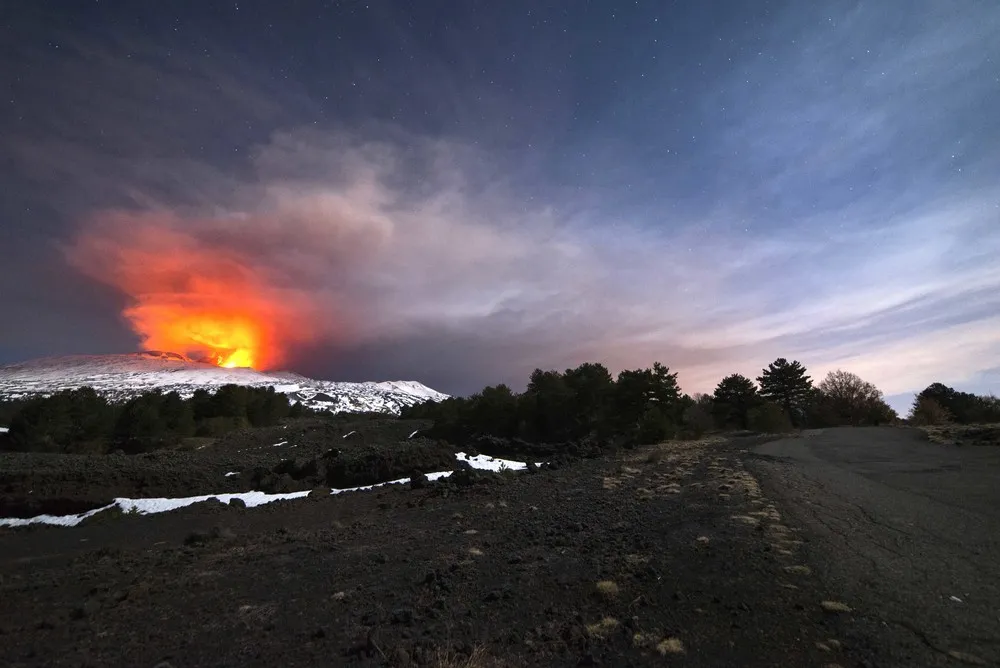|
Mount Etna, Europe's most active volcano, is seen from the side of a road as it spews lava during an eruption in the early hours of Thursday, March 16, 2017. Sicily's Mount Etna volcano unleashed an explosion Thursday, hurling molten rocks and steam that rained down on tourists, journalists and a scientist who scrambled to escape the barrage. Ten people were reported injured. The tourists, who were drawn to Etna to observe the spectacle of the active volcano erupting, were caught by surprise when its flowing magma hit thick snow, causing a phreatic explosion that rained rock and other material down upon them. Mount Etna has been active for the past two days, creating a visual spectacle as it spews lava and ash into the air. A new lava flow started from the southeastern crater on Wednesday, and was advancing with a temperature above 1,000 degrees Centigrade (1,832 degrees Fahrenheit) in an area covered by snow, creating the explosion. A similar phreatic explosion, caused when lava hits water, on Etna in 2002 injured 32 people, mostly firefighters and other emergency workers responding to a series of eruptions. Authorities limited access to riskier areas on Mount Etna following a deadly eruption in 1979 that killed nine tourists who were standing at the volcano's rim. Reports indicate that the tourists who experienced the eruption Thursday were in a zone where access is permitted with a guide. The volcanology institute said it was continuing to monitor the situation. (Photo by Salvatore Allegra/AP Photo)
|

